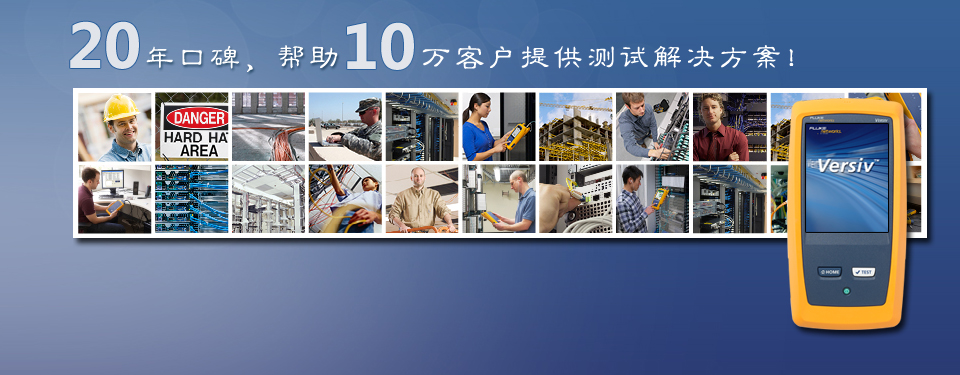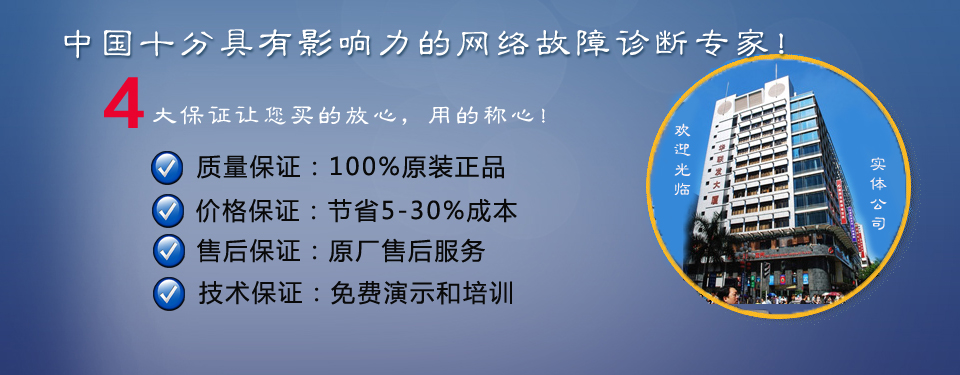福禄克DSX-5000:温度对应福禄克插入损耗(衰减)测试的影响
在ANSI/TIA、ISO/IEC和IEEE中发现的插入损耗限制是基于在20℃(68μF)下运行的链路。随着温度的升高,你可以预期你的链接的插入损耗也会增加。在设计中没有考虑到这一点可能会导致传输错误。在某些情况下,预期的应用可能不起作用。
布线标准为这一主题提供了极好的指导。
ANSI/TIA568C.2附录G
电缆可以安装在天花板空气空间、提升管轴和非空调建筑如仓库和制造工厂中,其中温度可以显著高于20℃,以确保符合CLAU规定的通道插入损耗。SE 62.7,根据电缆长度上的环境平均温度、安装电缆的插入损耗裕度和电缆的插入损耗温度系数,水平电缆距离可能需要降低到90米以下。
ISO/IEC 11801:2011表32——水平沟道长度方程
对于高于20℃的工作温度,对于屏蔽电缆,H应减少0.2%,每C C减少0.4%,每C C(20℃至40℃),未屏蔽电缆的0%,6%C(>40℃~60℃)。其中H是长度。
该ANSI/TIA568C.2标准继续以表格的形式提供额外的指导:
The Insertion Loss limits found in ANSI/TIA, ISO/IEC and IEEE are based on the link operating at 20 ?C (68 ?F). As temperature increases, you can expect the Insertion Loss of your link to increase too. Failing to take this into account in your design may result in transmission errors. In some cases, the intended application may not work.
The cabling standards provide excellent guidance on this subject. You are encouraged to purchase these online at either?https://global.ihs.com or?http://www.iso.org.
ANSI/TIA-568-C.2 Annex G
Cables may be installed in return air plenums, in ceiling spaces, riser shafts and non air-conditioned buildings such as warehouses and manufacturing plants where the temperature can be significantly higher than 20 ?C. In order to ensure compliance with the channel insertion loss specified in clause 6.2.7, the horizontal cable distance may need to be reduced below 90 meters depending upon the average temperature of the environment over the length of the cable, the insertion loss margin of the installed cabling, and the insertion loss temperature coefficient of the cable.
ISO/IEC 11801:2011 Table 32 – Horizontal channel length equations
For operating temperatures above 20 ?C, H should be reduced by 0,2 % per ?C for screened cables; 0,4 % per ?C (20 ?C to 40 ?C) and 0,6 % per ?C (>40 ?C to 60 ?C) for unscreened cables. Where H is length.
This ANSI/TIA-568-C.2 standard goes on to provide additional guidance in the form of a table:
|
Temperature (?C?(?F)) |
Maximum
horizontal?unscreened cable?length?(m) |
Maximum
horizontal screened cablelength?(m) |
Length?de-rating?(m) (unscreened) |
Length?de-rating?(m)(screened) |
| 20?(68)
25?(77) 30?(86) 35?(95) 40?(104) 45?(113) 50?(122) 55?(131) 60?(140) |
90.0
89.0 87.0 85.5 84.0 81.7 79.5 77.2 75.0 |
90.0
89.5 88.5 87.7 87.0 86.5 85.5 84.7 83.0 |
0.0
1.0 3.0 4.5 6.0 8.3 10.5 12.8 15.0 |
0.0
0.5 1.5 2.3 3.0 3.5 4.5 5.3 6.0 |
Some field testers allow you to adjust the insertion loss PASS/FAIL line based on temperature. This is not permitted per ANSI/TIA, ISO/IEC and IEEE. If your cable is to be subjected to an elevated temperature, your design must take this into account by reducing the length of the link, not by relaxing the Insertion Loss limit.
Fluke Networks DSX-5000或者DSX-5000? does not allow you to adjust the Insertion Loss in any of its field testers based on temperature.
本文关键字: DSX-5000, Fluke, 插入损耗, 福禄克, 衰减
原创标题:福禄克DSX-5000:温度对应福禄克插入损耗(衰减)测试的影响
原文链接:http://www.faxytech.com/archives/dsx-il-temp.html
版权说明:本文为深圳市连讯达电子技术开发有限公司官网(www.faxytech.com)版权所有。如果您需要转载,请注明出处并保留原文链接!如为转载文章会注明文章出处,转载文章不代表本公司观点。对于某些同行无耻恶意抄袭剽窃连讯客户案例的违法行为,连讯将追究法律责任!
详情请致电连讯公司:0755-83999818




 新一代中文手持式测试仪 – 省时省力。
新一代中文手持式测试仪 – 省时省力。
 新一代中文手持式测试仪 – 省时省力。
新一代中文手持式测试仪 – 省时省力。
 新一代手持式网络分析仪 – 省时省力。
新一代手持式网络分析仪 – 省时省力。
 新一代快速OTDR测试仪 – 省时省力。
新一代快速OTDR测试仪 – 省时省力。


